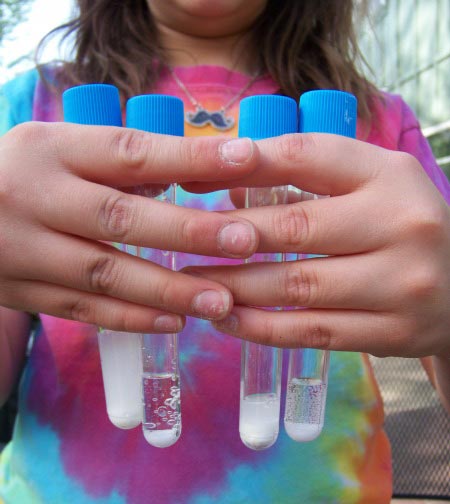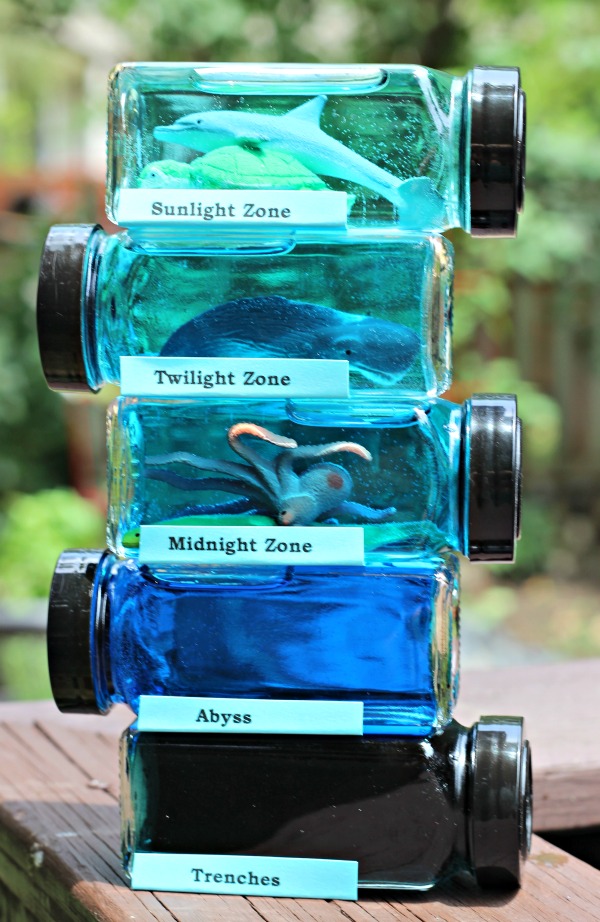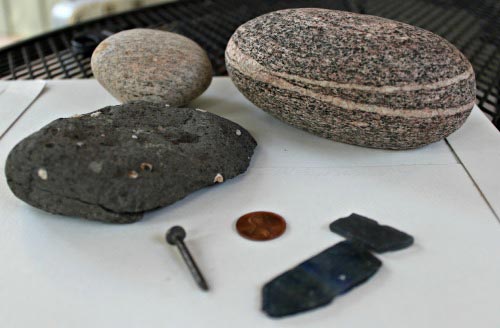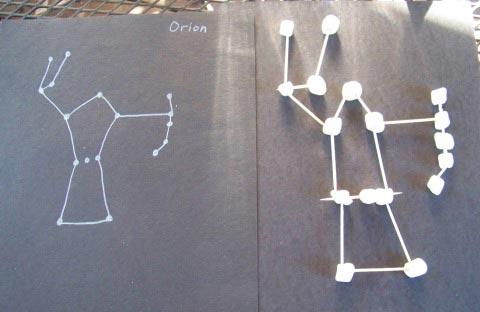Try these 20 FREE Backyard science experiments & outdoor science projects that are easy to do and turn your backyard into a giant science lab for kids!
As you can tell by our HUGE collection of science experiments & activities for kids, we do many of them right in our backyard.
This wasn’t always the case — in fact, it came about quite by accident but we now LOVE doing easy outdoor science activities!
Here’s how it all began …
20 Backyard Science Experiments & Outdoor Science Activities
When my son was younger, we would do quite a few of the projects inside since his little sister was a baby.
But then one day, I had this ‘Mom moment’ when I was cleaning up a mess for like the millionth time that week and I just made a “new house rule” — If it splatters, stains, smokes or stinks, we do it outside!
You know those times when you say something out of desperation because you’re not sure how you’ll deal with one more mess, right?
Well, kids actually listen sometimes 🙂
So the next time we were ready to do an experiment, my son said “Aren’t we going to do this in the backyard?”
And that’s how Backyard Science began and we haven’t looked back!
I absolutely LOVE it because every Spring, Summer and Fall, we transform our backyard into this AWESOME science lab!
We grab a few of our much-loved outdoor science tools and head outside to experiment.
So today I’m going to show you how to create an amazing Backyard Science Lab that will keep your kids inspired to experiment — all for less than $10!
Why do Outdoor Science Experiments with Kids?
The backyard naturally lends itself to many ecology, nature and geology experiments but it’s also the perfect place to explore physics, chemistry, zoology and astronomy too!
Plus there are a LOT less distractions outside than there are indoors 🙂
And then there’s the whole ‘get outdoors and enjoy some fresh air’ while burning off a little energy philosophy too.
And remember our house rule — it’s so much better to be in a wide open area if you’re planning to have something splash, explode or fly into the air 😉
Other than the items you’ll find right in your own yard or a few things you’ll have on hand in the house, here are some of the science tools that will transform your yard into one AWESOME science lab! We’re also including affiliate links to items we love to use so you can learn more about each one.
Outdoor Science Tools for the Backyard
One of the most used science tools for kids is a Kid-friendly Magnifying Glass! You can get a close-up look at bugs, rocks, flowers and so much more! These run less than $5 and you can find them at garage sales too.
Most kids will also tell you one of their must-have tools is a set of binoculars! And yes, you can find them for less than $10 (woo-hoo!) Try these Educational Insights Geo-safari Compass Binoculars for younger kids or this set of Mini Zoom Binoculars with bag for tweens and teens — both a great deal!
Another popular item is a set of plastic Test Tubes with Twist-on Caps — these are great for chemistry experiments, testing dirt (yea, kids like to do that ;), tree seed collectors and more. If you have younger kids, try the extra large plastic Test Tubes with holding rack. We also have a set of plastic Beakers that we love for measuring liquids!
Science on a budget can be super easy to do — there are so many thing from around the house that can be used as ‘science tools’ — tweezers, kitchen measuring cups that can double as beakers, jars for bug houses and loads of FREE resources you can find online (including the ones we’ve listed below)!
For each of the science experiments & activities on our list, we’ve included the materials you’ll need, a link to the experiment and the approximate time it takes to complete the activity.
Let the BACKYARD SCIENCE begin!
BOTANY SCIENCE ACTIVITIES
A look at the life of a plant, trees and other items growing in your yard!
1. How does a Plant or Leaf Breathe?
This amazing experiment shows how leaves use oxygen and allows kids to observe part of the photosynthesis process !
Materials: bowl of water, rock, large leaf, sunny spot in the yard
Time Required: Set-up is 5 minutes, then experiment needs to sit for 3 hours or more (can be done while the kids play or are at school)
2. Name that Tree!
Learn what trees call your backyard home with these FREE printable tree tags & tree identification printable! This activity can also be done at a local park too.
Materials: free tree tags, trees 🙂
Time Required: 30 minutes or less (depending on how many varieties of trees you have in the yard)
3. Dissect a Flower
See what’s inside that beautiful bloom when you dissect a flower and learn about pollination!
Materials: any large-size flower (tulips, sunflowers, daffodils, etc), a small paring knife, magnifying glass
Time Required: 45 minutes – 1 hour
4. Make a DIY Nature Journal
Learn about plants, trees and wildlife with the 50+ FREE printables included in your own handmade Nature Journal!
Materials: paper bag, free printables (found at above link), colorful washi tape
Time Required: 1 hour or more
5. Explore the Parts of a Leaf
Always a fun activity — create gorgeous leaf rubbings and learn about the parts of a leaf. This also includes an experiment using art materials and items from around the house.
Materials: leaves, crayons/oil pastels, a variety of paper from around the house
Time Required: 30 minutes
OUTDOOR PHYSICS EXPERIMENTS FOR KIDS
These experiments help kids learn about forces and the various laws of science such as gravity, movement, etc.
6. Launching Water Rockets
Learn about forces as you launch water rockets into the sky!
Materials: garden hose, recycled items to make rockets (see directions)
Time Required: 1 hour
7. Does Your Food Float?
Explore density with this sink or float experiment which includes a FREE science tracking worksheet!
Materials: large container of water, any fruit or veggies you have in the fridge, free printable worksheet
Time Required: 30 minutes

ANIMAL & INSECT SCIENCE ACTIVITIES
Experiments that study animals and their behavior — and no, tell the kids it’s not just zoo animals 😉 Zoology covers the study of all animals.
And if you have bug-loving kids, they’ll enjoy a little Entomology — the study of insects!
Observing Animal Behavior
Grab your binoculars and head outside to see what wildlife you can spot with this FREE observation sheet that looks at animal behavior.
Materials: binoculars, animal observation sheet (at link above), pencil
Time Required: 30 minutes – 1 hour
Who’s Visiting your Backyard?
Search your yard to identify animal tracks and match them to an Animal Tracks chart!
Materials: You’ll need some mud, sand or snow in the yard for this one & you may need your magnifying glass. This is also best done in the early part of the day since many animals come out at night or early morning.
Time Required: 15 – 30 minutes
Let’s Get Buggy!
Use this FREE printable Bug Scavenger Hunt Field Notes to search out & sketch some of your favorite insect friends
Materials: free printable bug hunt, colored pencils, your magnifying glass
Time Required: 15 – 30 minutes
Also be sure to check out Think Outside Boxes! They offer some great backyard learning on topics like wildlife, weather, nature & more!
Become a Real Life Scientist
These are really cool opportunities! Kids (and parents) can help collect data for more than 100 actual science studies that are happening around the world!!
Almost all are online and provide you with details on how to collect & submit your findings. Explore this list of 12 Citizen Scientist websites to see which interest your family.
Materials: computer or smart phone
Time Required: varies by experiment

OUTDOOR CHEMISTRY EXPERIMENTS
So much fun to mix, bubble and blow things up! And usually messy which is why we do it outside 🙂 PS. Anytime you’re experimenting with chemicals or chemistry, the kids should be wearing a set of Kid-size Science Safety Glasses to keep their eyes safe!
DIY Wizard’s Lab
Create things that bubble, fizz and boil over with these fun chemical reactions using items from around the house !
Materials: baking soda, corn starch, vinegar, rubbing alcohol, hydrogen peroxide and a set of test tubes
Time Required: 30 – 45 minutes
Blow Up a Balloon WITHOUT any Air!
This cool experiment uses a few items from around the house to create a chemical reaction that can blow up a balloon or blow out a candle!
Materials: balloon, glass bottle, baking soda, vinegar, a candle and something to light the candle
Time Required: 15 minutes for each experiment

BACKYARD OCEANOGRAPHY PROJECTS
Yes, you can even study the ocean in your backyard no matter who close you may live to it!
Who Lives in the 5 Ocean Zones?
This hands-on science inspires kids to build a set of ocean zones while studying which marine animals live in each area of the big blue sea!
Materials: 5 small glass bottles or plastic containers, water, food coloring, mini ocean animals and if you don’t live close to the water, an amazing book about the ocean is good to have too!
Time Required: 1 hour

GEOLOGY EXPERIMENTS
Learn about rocks, minerals and if you’re lucky to find them – fossils!
Finding Rocks & Minerals
Learn how to identify the different types of rocks in your yard & test their hardness.
Then organize what you find in a DIY Mini-Nature Collection container!
Materials: rocks, hardness table (found in post), small container, newspaper, recycled piece of mail, penny, nail, this free printable Rock Classification chart from Relentlessly Fun, Deceptively Educational
Time Required: 30 minutes – 1 hour (this is an activity that can be added to throughout the year)
Rock & Vinegar Testing Experiment
See if you can identify a certain type of rock using this easy science experiment — the Acid Test for Rocks.
Materials: various types of rocks, a bowl for each rock, white vinegar
Time Needed: 20 minutes
BACKYARD ASTRONOMY FOR KIDS
Study the night sky and explore the moon and stars with these activities. Having a kid-friendly telescope for your yard i
Creating Marshmallow Constellations
Explore the night sky and then use mini-marshmallows & toothpicks to make your own constellations !
Materials: mini-marshmallows or regular size ones cut into small pieces, toothpicks, constellation app or sky sheet (found in the post above)
Time Needed: 30 minutes
Phases of the Moon
Head outside each night to observe the different phases of the moon and create a 3D moon chart to study the various changes and phases.
Materials: white clay or playdough (we like to use this Model Magic pack), plastic top from your recycling bin, dark piece of paper
Time Needed: 2 minutes each night for a month (less than an hour)
Also visit iGame Mom for 11 More Backyard Science Experiments and Science Sparks for 20 Outdoor Science Activities!




